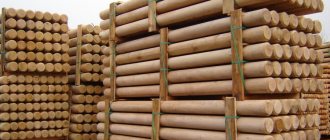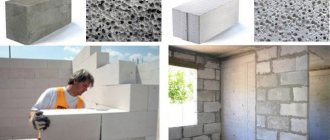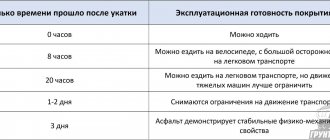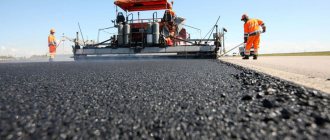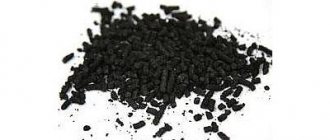From the outside, the finished asphalt pavement looks very dense, almost monolithic. But it is not so. In its thickness there are air voids - pores. In addition, during operation, the asphalt becomes covered with cracks and potholes. All these cracks fill with water in rainy weather.
Water saturation shows how much moisture, as a percentage of its volume, asphalt can absorb. It is directly related to such a characteristic as porosity. The more pores in a material, the higher its water saturation - and vice versa.
This is a very important property on which the water and frost resistance of the road surface depends.
And in the long term - its ability to resist wear and service life. Therefore, regulatory documents impose fairly stringent requirements on the water saturation value of asphalts, especially high-quality ones. In this article we will consider the following questions:
- What determines the water saturation of asphalt?
- What is the effect of water saturation of the road surface?
- How is water saturation of asphalt determined?
- What are the requirements for water saturation of asphalt?
- What are the ways to reduce water saturation of a coating?
Let's look at each of them separately.
What does water saturation depend on?
So, we have already said that the water saturation of asphalt is associated with the content of air pores in it.
Their number is determined by two factors:
- Composition of the asphalt concrete mixture (ABC) As a rule, in this case, high water saturation indicates an incorrect selection of the grain composition of the mixture. The fact is that large grains of crushed stone do not fit tightly together, many voids form between them. To fill them, a fine-grained filler is introduced into the composition: fine crushed stone, sand, mineral powder. But if the ratio of components was chosen incorrectly, then this goal will not be achieved.
- Quality of compaction when laying asphalt To turn the asphalt concrete mixture into a reliable coating, it must be rolled or compacted. It is during this operation that air voids are removed from the material. If the compaction was of poor quality, then the pore content will seriously exceed the norm.
Laboratory tests allow us to understand at what stage - production or installation - errors were made. We'll talk more about this below.
High water saturation may indicate the following violations:
- Laying was carried out in cold or rainy weather (if we are not talking about cold asphalt)
- The mixture had cooled down by the time it began to be compacted.
- The skating rink made too few passes on the surface
- Rollers that were too light or ineffective were used for compaction
Another case worth mentioning is the use of a heterogeneous mixture. In this case, we can talk about both the uneven distribution of large and small grains in its composition, and the presence of cold and hot areas in the material during installation. This is a serious violation. It leads to the formation of “spots” with increased water saturation in the finished asphalt. These are weak spots in the coating that quickly begin to crumble and turn into potholes.
You can read more about this property in our article Homogeneity of asphalt.
Now let's take a closer look at how exactly poor asphalt performance in this property leads to its destruction.
What does water saturation affect?
The water saturation indicator is directly related to a number of other important characteristics of the material.
These include:
- Water resistance
- Frost resistance
- Chemical resistance
- Wear resistance
- Life time
Let's look at each in a little more detail.
Water resistance
All specialists and amateurs in the field of construction know that water is a rather aggressive substance. Of course, it cannot dissolve the components of asphalt: crushed stone, sand and bitumen (unless we are talking about limestone materials). But over time, moisture penetrates under the bitumen film, which envelops the grains of the mineral filler, and destroys the bonds between the components of the mixture.
As a result, asphalt loses its structural cohesion and begins to crumble. Large grains of crushed stone fall out of it, and in their place pits form, which grow over time. You have probably seen the results of such destruction more than once on our roads.
It is easy to guess that the higher the water saturation of asphalt and the more moisture it can absorb, the more aggressive and faster the destructive effect of water will be.
You can read more about this property in the article Water resistance of asphalt.
Frost resistance
In addition to liquid, water also has a solid state - at sub-zero temperatures it turns into ice. At the same time, it expands and presses on the asphalt from the inside, destroying it. And the more pores saturated with moisture, the higher the internal pressure.
This is especially dangerous during the off-season periods - early spring and late autumn. During these months, the air temperature constantly fluctuates around zero. During a thaw, the asphalt becomes more and more saturated with melt water. And with each new cold snap, the moisture freezes and “bursts” it from the inside.
You can read more about this property in the article Frost resistance of asphalt.
Chemical resistance
As we said, water itself is an aggressive substance. But on modern roads, pure H2O without impurities is rarely found. This is especially true in winter, when the coatings are generously sprinkled and watered with deicing agents.
All these chemicals - primarily salts - have a destructive effect on asphalt. Moreover, they affect both the organic binder, causing its aging, and the mineral filler. And this corrosive effect increases as the water saturation of the coating increases.
You can read more about this property in the article Chemical resistance of asphalt.
Wear resistance
This property characterizes the ability of asphalt to resist wear and abrasion under the wheels of cars. It depends on many indicators of the material, including those described above: water, frost and chemical resistance.
You can read more about this property in the article Wear resistance of asphalt.
Life time
From all that has been said above, it logically follows that asphalt with increased water saturation has poor water, frost, wear and chemical resistance. All this leads to the fact that it quickly becomes unusable. In particularly unfortunate cases, the coating has to be changed after a year.
You can read more about this property in the article Service life of asphalt.
As you can see, water saturation is a very important property of the material. Therefore, it is one of the characteristics that must be determined for asphalt.
Method for determining water saturation
The standard method for determining the water saturation of asphalt is described in GOST 12801-98 “Materials based on organic binders for road and airfield construction. Test methods".
In accordance with it, the following can be investigated:
- ABS samples prepared in laboratory conditions Such tests are carried out to determine the properties of a particular composition. They allow us to judge the quality of the mixture and its compliance with standards.
- Cuttings (cores) from the finished road surface or base. Cutting studies are carried out to assess the quality of road work.
The test begins with the preparation of samples. If we are talking about ABS, then several samples (at least 3) are taken from it, which are then compacted in a hydraulic press under a pressure of 40 MPa. Cuttings from the coating are cleared of debris and washed, after which they are dried to a constant weight.
The measurement procedure looks like this:
- The prepared samples are weighed in air and the mass g is recorded.
- They are then immersed in water at room temperature, kept for 30 minutes and weighed in water and then in air. Write down the masses g1 and g2 respectively. Often researchers do not make these measurements specifically, but take the values obtained during the determination of the average density. You can read more about the method of measuring it in the article Density and mass of asphalt.
- Weighed samples or cores are placed in a container with water so that it covers them by at least 3 cm. It is placed in a vacuum unit under pressure up to 2000 Pa.
- Samples prepared from hot mixtures are kept under vacuum for an hour, cold asphalt - for 30 minutes.
- The vacuum is then released and the samples are kept in water under atmospheric pressure for another 30 minutes.
- The asphalt is removed from the vacuum unit, excess water is removed with a rag and weighed in air. The mass g5 is obtained.
- Water saturation W is calculated using the formula:
Such calculations are carried out for all tested samples - usually there are three of them. The arithmetic mean of all measurements is taken as the final value.
When studying cores, one more step is added - the preparation of reshaped samples. These are cuttings from the finished asphalt layer, which are re-compacted again - already in the laboratory. Comparing the performance of conventional and remolded samples allows us to evaluate the quality of road work. Ideally, they should be, if not identical, then very close.
The reshaping procedure looks like this:
- The cuttings are heated to a temperature of about 150°C. As a result, the bitumen melts, and the asphalt turns into a loose mixture - just like when laying.
- The mixture is crushed by hand. Small grains are separated from large ones, and lumps of material are loosened.
- Samples of the crushed mixture are loaded into a hydraulic press and compacted under a pressure of 40 MPa for 3 minutes.
The obtained samples are used as a standard. All the same tests are carried out for them as for conventional fellings. The results are then compared.
If the water saturation of the laboratory sample corresponds to the norm, but it is too high for the coating core, it means that serious errors were made during installation. If the indicator in both cases is outside the norm, then the problem is in the material itself.
For asphalt concrete, both water saturation values are standardized: for conventional samples and remolded ones. Let's take a closer look at this.
Preparatory work
Testing of asphalt concrete according to GOST is carried out in several stages, the first of which involves the selection of samples and their preparation. This is where we will start.
Sampling and mixture preparation
When considering this issue, we will be guided by the requirements of GOST 12801-84. In the process of selecting the composition, the mixture is prepared in a special laboratory mixer, which is equipped with a heating device.
Sand, crushed stone and mineral powder are pre-dried, and after placing in a container, they are heated to a certain temperature. Lastly, the binder is added, also in heated form.
The temperature to which the material should be heated depends on the type of mixture (hot, warm, cold). It must correspond to the value specified in Table 1.
Laboratory tests of asphalt concrete pavement: requirements for the heating temperature of raw materials for different types of mixtures:
| Type of asphalt concrete mixture | Temperature of mineral raw materials | Binder temperature | Temperature of the mixture during sample manufacturing |
| Cold | 100-120 | 80-90 | 18-22 |
| hot | 100-110 | 80-90 | 90-100 |
| Warm | 120-130 | 100-120 | 120 |
Note! If surfactants or mineral powders are used, the temperature of the binder and mixture can be reduced by about 15-20 degrees.
Mixing of raw materials is carried out for 3-6 minutes; the exact time, as a rule, is established experimentally. The mixture is considered ready if the mineral filler is completely covered with binder and there are no clots in the solution. The last stage is molding.
Compaction of future samples, which will be tested for strength, swelling and water saturation, is carried out using several methods, which depend on the percentage of crushed stone in the solution.
There can be two options:
- Crushed stone content is less than 35%. In this case, pressing is carried out under a pressure of 40 MPa;
- If the crushed stone content is more than 35%, compaction is carried out by vibration, and subsequently by pressing under a pressure of 20 MPa.
The compaction of a sample taken from a cold mixture, which will subsequently be tested for caking, is carried out under significantly lower pressure, amounting to only 0.5 MPa. Samples taken from the mixture must be completed within the first 30 minutes.
When monitoring the quality of the finished coating, samples are removed by cutting or drilling. In this case, a pneumatic hammer (cutting) or a drilling rig (drilling) is used.
Making samples
As mentioned above, tests of the physical and mechanical properties of asphalt concrete are carried out on cylindrical samples, which are obtained by compacting the solution in special forms.
Punch samples or core samples can also be used. Compaction by pressing is carried out as follows:
- The press can be mechanical or hydraulic. It must provide pressure up to 40 MPa;
- The press is equipped with a special device that allows you to simultaneously prepare 3 sample cylinders;
- The forms are located in a box, which is equipped with a heating mechanism;
- To remove samples, such asphalt concrete testing equipment is equipped with a thrust device;
- If the power of the press is not enough to simultaneously produce three samples, only one mold is placed in it;
- The electric motor is turned on, the pressure is increased to 40 MPa. At the last stage, the finished samples are removed.
Test press
Compaction using a combined method implies the following:
- Compaction is carried out using vibration followed by compaction;
- The production of samples occurs in single forms;
- The form is filled with the mixture and sent to a vibrating platform, on which it is fixed;
- Vibration lasts for approximately 3 minutes, then the sample is sent for additional compaction under a pressure of 20 MPa. The exposure time is the same;
- Using a squeezing device, the sample is removed.
Vibrating platform for compacting asphalt concrete
Samples made from a cold mixture, which will subsequently be tested for caking, are prepared as follows:
- The mixture is heated to the temperature indicated in table 1:
- The solution is poured into the mold;
- A load capable of providing a pressure of 0.5 MPa is installed on the upper liner;
- Exposure time is the same 3 minutes;
- Subsequently, the sample is kept for about four hours.
The size of the sample and the amount of the required mixture are also established by GOST and depend on the property that will be tested.
Requirements for water saturation of asphalt
Technical characteristics of hot (warm) and cold ABS are standardized in accordance with GOST 9128-2013 “Asphalt concrete mixtures and asphalt concrete for roads and airfields.” For cast asphalt, a separate standard is used - TU 5718-002-04000633-2006.
But before we move on to talking about water saturation, let's remember two important classifications of asphalt concrete: residual porosity and crushed stone content.
There are four types of ABS based on porosity:
- Highly porous (residual porosity 10-18%)
- Porous (5-10%)
- Dense (2.5-5%)
- High density (1-2.5%)
Based on crushed stone content, asphalt is divided into types:
- Type A: 50-60% crushed stone
- Type B (Bx): 40-50% crushed stone or gravel
- Type B (Bx): 30-40% crushed stone or gravel
- Type G (Gx): sand (with crushing screenings)
- Type D (Dx): sand (with natural sand)
You can learn more about these and other material classifications in our article Types of asphalt.
Specific values vary depending on the type of asphalt. For example, for a high-density material, water saturation should be minimal. And for porous mixtures that are not used in critical road construction, the requirements are less stringent.
For hot dense and high-density mixtures, the indicators are normalized as follows:
| Type of asphalt | Type of asphalt | Water saturation of felling, % | Water saturation of the remolded sample, % |
| High density | Any | Until 3 | From 0.5 to 2.5 |
| Dense | A | Up to 5 | From 1.5 to 5 |
| B, C, D | Up to 4.5 | From 1 to 4 | |
| D | Up to 4 | From 0.5 to 4 |
For your convenience, below we have placed the same table in the form of a picture:
For other types of asphalt, the standards are as follows:
- Hot porous mixtures – from 4% to 10%
- Hot highly porous mixtures – from 10% to 18%
- Cold asphalt – from 5% to 9%
Strict requirements are imposed on cast asphalt. After all, this expensive material in Russia is used mainly where coatings of the highest quality are needed - on highways and bridges.
Molded ABS is divided into five types according to the following criteria:
| Type | Maximum grain size, mm | Content of fractions over 5 mm, % | Content of bitumen and mineral powder, % | Application area |
| I | 15 | 45-55 | 25-30 | Construction of road surfaces |
| II | 20 | 35-50 | 20-25 | |
| III | 40 | 45-65 | 15-20 | Construction of highway foundations |
| IV | 5 | — | 17-23 | Arrangement of sidewalks and pedestrian paths |
| V | 20 | 35-50 | 22-28 | Current repair of road surfaces |
For your convenience, below we have placed the same table in the form of a picture:
Their water saturation values are normalized as follows:
- Types I, II – no more than 1%
- Type III – no more than 5%
- Type IV – no more than 7%
- Type V – no more than 0.5%
As you can see, the higher quality the asphalt, the lower its water saturation should be.
In the final section of the article we will talk about what additional measures manufacturers take to create the best formulations.
Test methods
Since we have understood the selection and production of samples, it is time to move directly to the consideration of test methods and indicators that will be subjected to them.
The essence of methods for monitoring basic quality indicators
Any test contains the following stages:
- Preparing for the test;
- Carrying it out;
- Processing the results.
Using the table, let us consider the essence of the main methods for monitoring the compliance of indicators.
Asphalt concrete: GOST test methods:
| Indicator name | Instruments for testing asphalt concrete | Briefly about the essence of the method |
| Average density (bulk weight) | Scales equipped with a weighing device (hydrostatic); vessel with a volume of 1-3 liters. | The essence is to determine the density value, taking into account the pores contained in samples manufactured in laboratory conditions or in samples removed from the coating. Brief instructions look like this:
In addition to the volumetric mass of asphalt concrete, the volumetric mass of the mineral part, taking into account pores, and the specific gravity of the core, excluding pores, are subject to control. The calculation method is used. |
| Determination of specific gravity using the pycnometric method | Koloba, volume 250-500 m3; Scales, vacuum device; mercury thermometer; dropper, vessel. | The prepared, crushed material is weighed using scales. The flask is weighed without water and with water. During testing, asphalt concrete is poured into a flask, filled with water and weighed. Then they are sent to a drying cabinet without heating and exposed to pressure of approximately 2000 MPa. Next, the pressure is reduced to normal and, after half an hour, the flask with the material is weighed. The results are being processed. |
| Determination of core porosity (mineral part) | No equipment is required; the determination is made by calculation based on known data. | The essence of the method is to calculate the volume of pores located in the mineral part. The procedure is carried out after determining the average and true density of the core, or, more precisely, on the basis of these data. |
| Residual porosity of asphalt concrete | No equipment required. | It is established on the basis of data obtained by identifying the true and average density using the calculation method using the formula. |
| Water saturation | Scales; vacuum device; Mercury thermometer, vessel with a volume of 2-3 liters. | Water saturation is taken to be a value that determines the amount of liquid that a sample absorbs under a certain (specified) saturation mode. The samples are placed in a vessel with water and sent to a drying cabinet, where a pressure of at least 2000 MPa must be maintained. Subsequently, the samples are removed and weighed. The results are recorded and processed. The increased amount of mass is the result of water absorption. That is, the difference in weight is the amount of moisture absorbed. |
| Swelling | No equipment is required; the determination is made by calculations using the formula. | To determine this indicator, data obtained as a result of checking the average density and the numerical value of water absorption through calculation calculations is used |
| Compressive strength | Press; mercury thermometer; vessels. | The essence of the method is to calculate the load that is placed on the sample until it fails. The sample is placed under a press and pressure is applied to it, which is progressively increased to a value at which the sample is destroyed. The maximum indicator of the meter is the breaking load. |
| Water resistance coefficient, including long-term exposure to moisture. |
| The essence of the method is to determine the decrease in the strength of the material after exposure to moisture. In this case, the sample is under vacuum conditions. When determining water resistance under prolonged exposure to water, the sample is kept for 15 days. After this, the samples are removed from the water and the compressive strength is measured. |
| Material composition |
| The method consists in determining the composition of asphalt concrete, precisely the mineral part and binder. A cartridge is made into which the asphalt concrete mixture or crushed material is placed. The cartridge is placed in the extraction nozzle. On one side, a refrigerator is placed, on the other, a flask with a solvent. The latter is heated. The solvent provokes the release of the binder. A sample of the mineral part is made by sifting it through a sieve, after washing and grinding in a cup, the spout of which is greased with petroleum jelly. There is also an accelerated control method and a burning method. |
| Compaction factor | No equipment required. Calculations are carried out on the basis of data obtained when determining the average density. | The compaction coefficient is calculated by the ratio of the density of samples taken from the coating to the average density of remolded samples under laboratory conditions. |
Test report for asphalt concrete
The video in this article: “Methods of control and testing” contains up-to-date information about testing processes, and talks about some tricks that allow you to check some quality indicators with your own hands.
Accompanying documents issued after testing
For each batch of material, a quality certificate for the asphalt concrete mixture is issued.
The passport for the asphalt concrete mixture contains the following information:
- Type, type, brand of mixture;
- Manufacturer's name and address;
- Standard number;
- Date of issue of the document;
- Weight of products;
- Shelf life;
- Tensile strength;
- Water resistance;
- Porosity of both the mineral part and the residual;
- Water saturation;
- Shear resistance;
- Efficiency of radionuclides;
- Crack resistance;
Sample passport for asphalt concrete
The passport and delivery note for the asphalt concrete mixture are the main documents that accompany the shipped products. The latter contains the following information: product price, carrier information, destination and shipment location, product weight, delivery date and time, mixture temperature, quantity and type of mixture.
Note! Despite the availability of documentation, such as a certificate of conformity for the asphalt concrete mixture, in accordance with GOST, the consumer has the right to a control (repeated) inspection of the product.
A certificate for asphalt concrete mixture is issued to each manufacturer whose products have been tested in all respects.
Certificate for asphalt concrete, example



